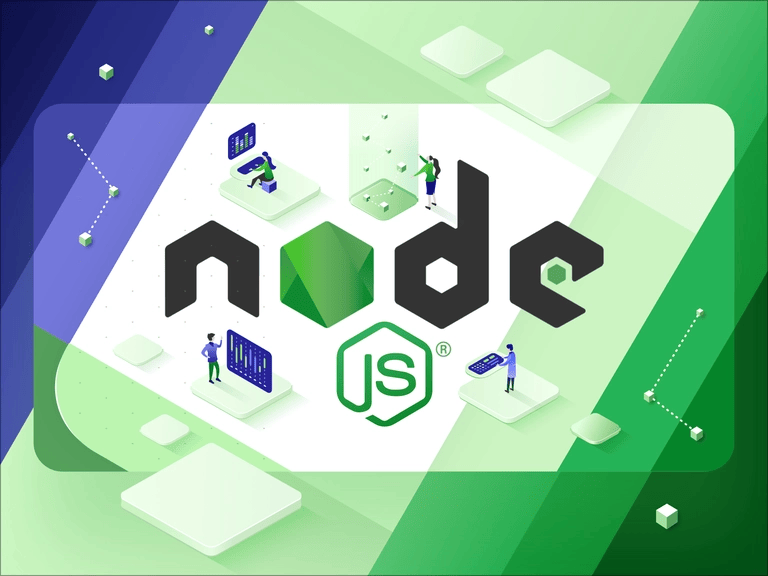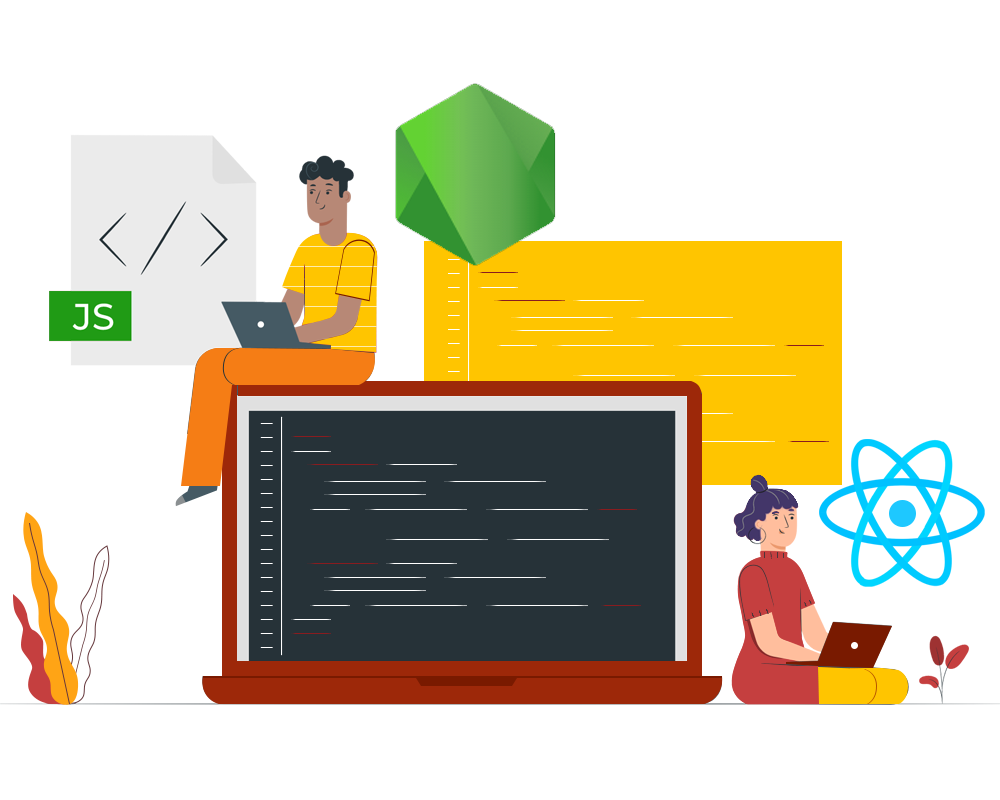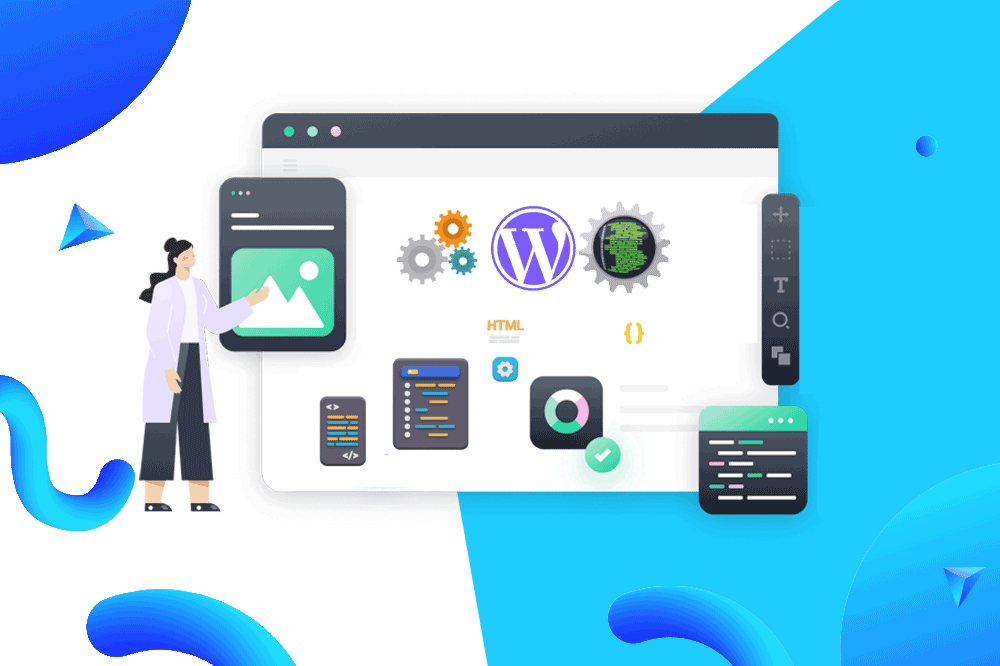In contrast to Node.js's ability to build rigid but fast-reacting web apps, React's strength lies in its ability to create interactive front ends. There has been a recent uptick in the practice of combining React and Node.js to build powerful, feature-rich applications. We are familiar with the JavaScript library known as React, and 3.6% of websites use it. There are 2.9% of websites like this. Furthermore, Node.js is used by 85% of developers when creating a web app, and it can boost performance by 50%. One of the most powerful ways to speed up the development of complex modular web applications is to combine the two tools. It is important to note that the integration of React and Node.js in web application development is displaying excellent outcomes. Here, we'll discuss in greater detail the benefits that can result from combining the two technologies.
Introducing Node.js
The V8 JavaScript engine supports Node.js natively in Google Chrome. It is a freely available programming language that can be used with a wide variety of computer systems. Therefore, it shortens both the time and effort required for the development. Using the JS language and its modules with Node.js eliminates any need for duplication. Node.js provides a JS runtime environment that can be used to build a bespoke server back-end. This event-driven language is ideal for use in programs that process large amounts of data. It can also run on multiple platforms and boost the speed at which code is executed. Non-blocking processing is a great strength of NodeJS. This means that the event loop handles all functions (callbacks), which are executed by multiple threads. The result is a highly scalable, yet single-threaded, t. In addition, it can be used on multiple platforms and promotes rapid advancement with useful features and functionalities. It also makes use of JavaScript frameworks and libraries for efficient coding. Did you know that Node is used by 2.0% of all websites? To whom do we attribute this js server? Wasn't it something that blew your mind? Twitter and Walmart, two behemoths of the computer world, both employ Node.js Development Services for backend development.
Advantages of Node.js
Just a few of Node.js's advantages:
- Comparable to other servers in terms of scalability in order to expand in both the horizontal and vertical planes.
- Microservices allow programmers to break down large programs into more manageable chunks. This allows them to efficiently create, launch, and maintain solutions by delegating duties across several teams.
- It is based on an event-loop approach and uses a single thread of execution. The server can reply in a non-blocking fashion thanks to the event system, which also makes it scalable. Furthermore, it is capable of processing multiple requests simultaneously.
- Makes use of the V8 JavaScript Runtime engine, which enables swift code execution. In order to streamline the execution process, it disassembles JavaScript features into machine code.
- The NPM (NODE PACKAGE MANAGER) package manager has a repository of modules and tools for website app development that is constantly being updated and expanded.
Key Features of Node.js
Node.js's features include the following:
- Open source, mobile-friendly, Linux/Unix/Windows/Mac OS X compatible.
- The speedy creation and release of apps are facilitated by their lightweight nature. Because of the speed with which it processes data, it can also be used to create microservices.
- It can run and upload files at the same time. Consequently, it boosts the speed of data flow.
- The same programming language can be used for both front- and back-end development. Thus, developers must work with a minimum number of files while simultaneously eliminating unnecessary translations between languages.
- It has a cluster module that handles balancing workload across all active CPUs.
Introducing ReactJS
After exploring the benefits and features of Node.js, let's have a look at what ReactJS has to offer. Developers who want to create a native, hybrid, and reliable apps often turn to React. Let's dive into React's features and figure out why it's such a good fit for Node. A recent survey found that React.js was the most popular framework for building websites. ReactJS is a JavaScript package for the front end that facilitates the development of modular UI components. It helps in creating large web applications with data-driven, interactive interfaces. And it continues to perform and look great across a wide range of devices. Popular applications that use ReactJS include WhatsApp, Instagram, Netflix, Uber, and Airbnb. The React UI design paradigm makes it easy to create scalable web applications with minimal effort and no prior knowledge of complicated frameworks or languages.
Advantages of ReactJS
The major advantages of ReactJS include:
- It's everything you need to create web apps that perform well in search engine results.
- The ability to reuse code helps programmers save time and effort throughout the creation and debugging processes.
- With data binding, programmers may track the evolution of any given data chunk in real-time.
- Make decisions based on individual parts. When written in simple JavaScript, it's much easier to understand. To make its operation more straightforward, JSX syntax combines HTML and JavaScript.
- Developers may save time using its client- and server-side application components.
- For top-notch app performance, use this library that was made just for that purpose. With the help of virtual DOM and server-side rendering, even complicated apps may run quickly.
Key Features of React.js
React is the most popular library since it provides a number of useful features that are essential when creating web-based applications. Let's take a closer look at its capabilities and why you should opt for React JS Development Services.
- It is made up of many parts that are assembled into one larger part. Each sub-element of a user interface has its own set of rules and logic. These parts can be used again and again.
- It uses a method of data binding that only works in one direction. Therefore, information is passed vertically, or from parent to kid, and never horizontally.
- Developers should be able to use both HTML and JavaScript simultaneously. It makes use of the JSX syntax extension for JavaScript.
- It utilizes a virtual DOM to speed up applications. When there is a change to the app, the virtual DOM refreshes the whole UI.
- Its declarative user interface improves code readability and reduces development time by eliminating unnecessary steps.
Can We Use Node.js with React?
Certainly. Web servers for React apps may be successfully hosted and operated on Node.js. Reasons include:
- The NPM registry is used by Node.js for installing packages and updates using the NPM CLI.
- It compiles many React apps into one manageable document. We use a web pack and Node modules to make the compilation process easier.
Hosting and managing websites using Node.js has several advantages:
- As a result of incorporating the V8 engine, we are better able to handle large numbers of requests at once. As a means of controlling the frequency and quality of these requests, callback functions are used for management.
- Even in a Node.js environment, the React code may be executed by novice programmers.
- React DOM's components were created with Node.js compatibility in mind, with the goal of reducing server-side rendering time and boilerplate code.
For their front-end code, a ReactJS Web Development Company for instance combined React and Node.js. Their website's functionality was enhanced as a result.
Benefits of Using The Combination of React and Node.js for Web App Development
High server load: Developers can manage requests and keep the server load even in the face of a high volume of traffic thanks to this complementary set of tools.
Real-time Data: If a developer's app requires constant access to a large amount of real-time data, they can maintain a constant connection to a server.
JSON APIs: Node.js simplifies the process of creating JSON APIs for software. Because of its code's modularity, it can easily collaborate with React.js.
MERN Stack: Integration with the MERN Stack (MongoDB, React, Node.js, and Express).
Single Page Application: Easy creation of single-page applications. As an added bonus, the backend model it creates for asynchronous loading via callback functions is both lightweight and powerful. Now that you know why each programming language is useful, let's find out what kind of revolution combining Node.js and React may cause.













